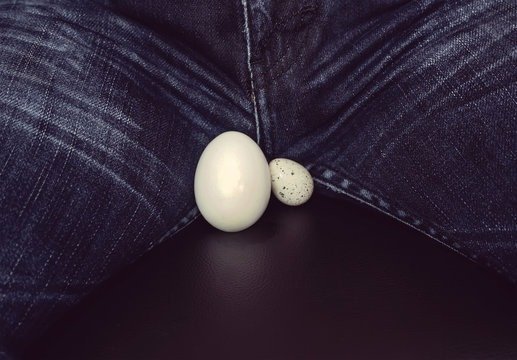Hydrocele
A hydrocele is a swelling of the scrotum, the thin sac that holds the testicles. This happens when excess fluid builds up inside. The condition is most common in newborns, although it can occur in anyone with a testicle.
There are two types of hydrocele
A non communicating hydrocele:- It occurs when the bag is closed normally but the boy's body does not absorb the fluid inside.
A communicating hydrocele:- it occurs the ponch does not close. With this type, their scrotum may become more swollen over time.

𝗦𝘆𝗺𝗽𝘁𝗼𝗺𝘀 𝗼𝗳 𝗵𝘆𝗱𝗿𝗼𝗰𝗲𝗹𝗲
- Swelling of one or both testicles and pain, discomfort or heaviness in the scrotum.
- Feeling of heaviness in the Sroctum.
- Inflammation caused by infection in the scrotum.
- Injury to the scrotum.
- Congenital.
- Pressure growth of the scrotum. This often occurs in non-communicating types of hydrocele.
𝗖𝗮𝘂𝘀𝗲𝘀 𝗼𝗳 𝗵𝘆𝗱𝗿𝗼𝗰𝗲𝗹𝗲
- Premature babies:- Hydrocele is common in newborn's, especially premature babies. It occurs when fluid from the abdomen enters the scrotum through the patent processus vaginalis, a channel that connects the abdomen to the scrotum.
- Inflammation:- In children, hydrocele can occur due to injury, infection or inflammation of the scrotum.
- Sexually Transmitted infection:- in young adults, a hydrocele can be caused by a sexually transmitted infection such as gonorrhea or chlamydia.
- Underlying medical condition:- A hydrocele in the elderly may be caused by an underlying medical condition such as heart or kidney failure, liver cirrhosis or lymphatic obstruction.
𝗥𝗶𝘀𝗸 𝗮𝗻𝗱 𝗖𝗼𝗺𝗽𝗹𝗶𝗰𝗮𝘁𝗶𝗼𝗻 𝗼𝗳 𝗵𝘆𝗱𝗿𝗼𝗰𝗲𝗹𝗲
- Inguinal Hernia.
- Testicular Torsion.
- Orchitis
- Varicoceles.
- Infertility.
𝗪𝗵𝗲𝗻 𝘁𝗼 𝘀𝗲𝗲 𝗮 𝗗𝗼𝗰𝘁𝗼𝗿
You should see a Doctor if you observe the following symptoms
- Mild pain in the groin region.
- Scrotal tenderness.
- Redness and inflammation of the testis.
- Vomiting.
- Enlarged scrotum, mainly observed in infants.
𝗣𝗿𝗲𝘃𝗲𝗻𝘁𝗶𝗼𝗻 𝗼𝗳 𝗛𝘆𝗱𝗿𝗼𝗰𝗲𝗹𝗲
- Special care should be taken such as wearing an athletic cup while playing sports.
- Maintaining a healthy weight can help reduce the stress in the body and improve blood flow, which can help manage hydrocele.
- Avoid tight clothing:- Wearing tight clothing, especially around the waist, can worsen swelling and contribute to the development of hydrocele.
- Avoid heavy lifting and strenuous activities:- These activities can put a strain on the body and contribute to the development or worsening of hydrocele.
- Constipation, which can lead to hydrocele and other health problems, can be avoided by drinking enough water and other fluids.
